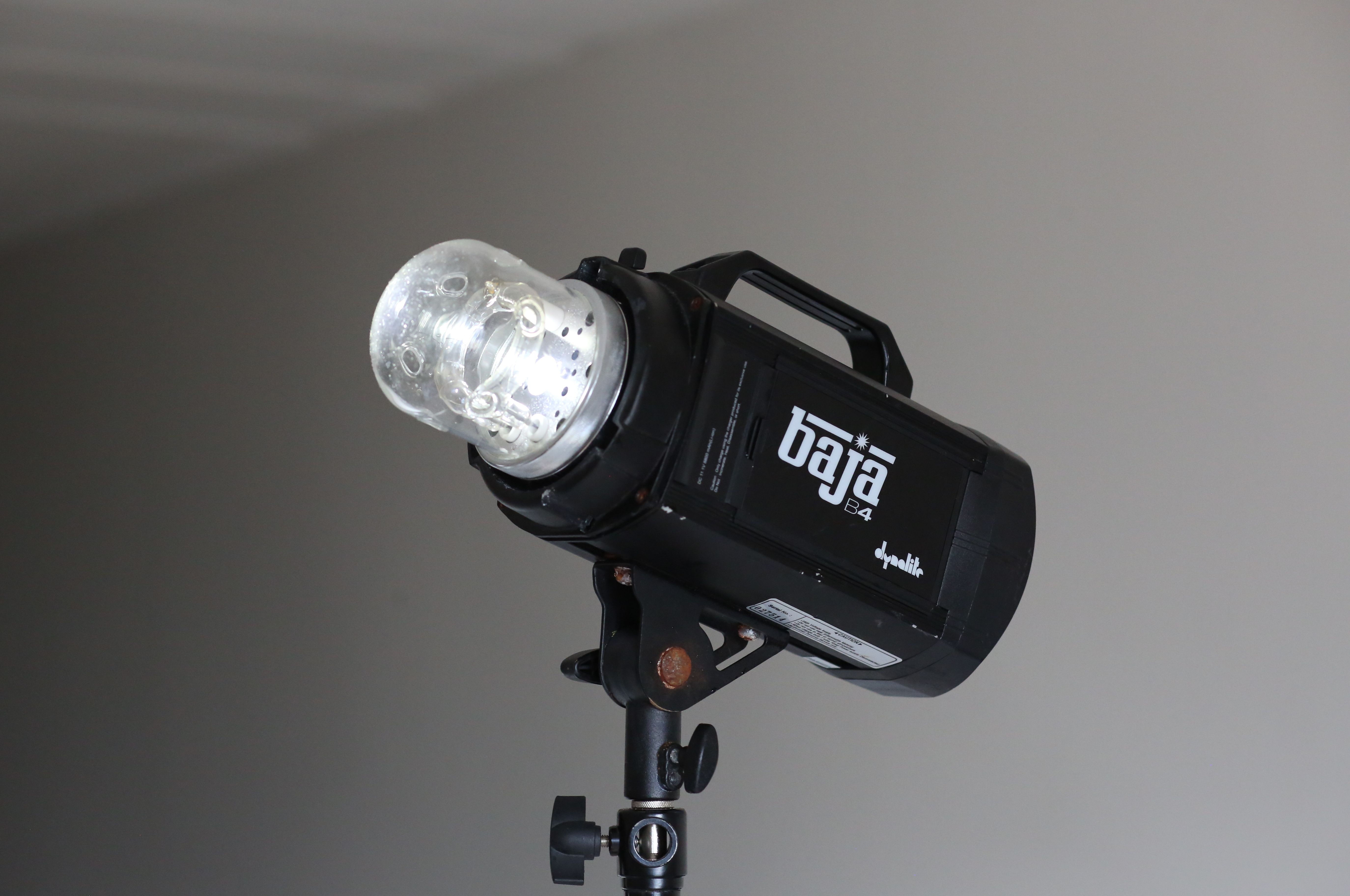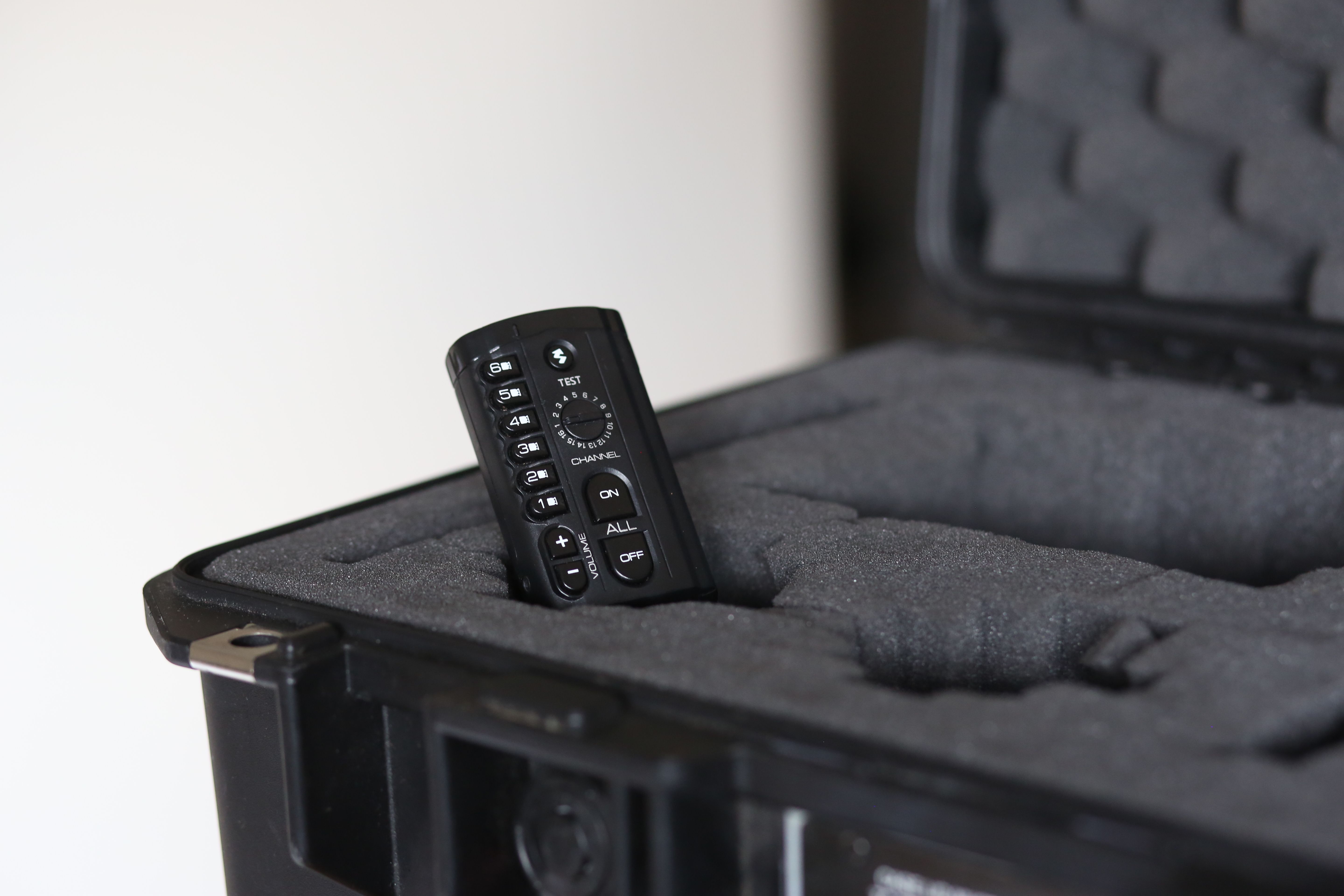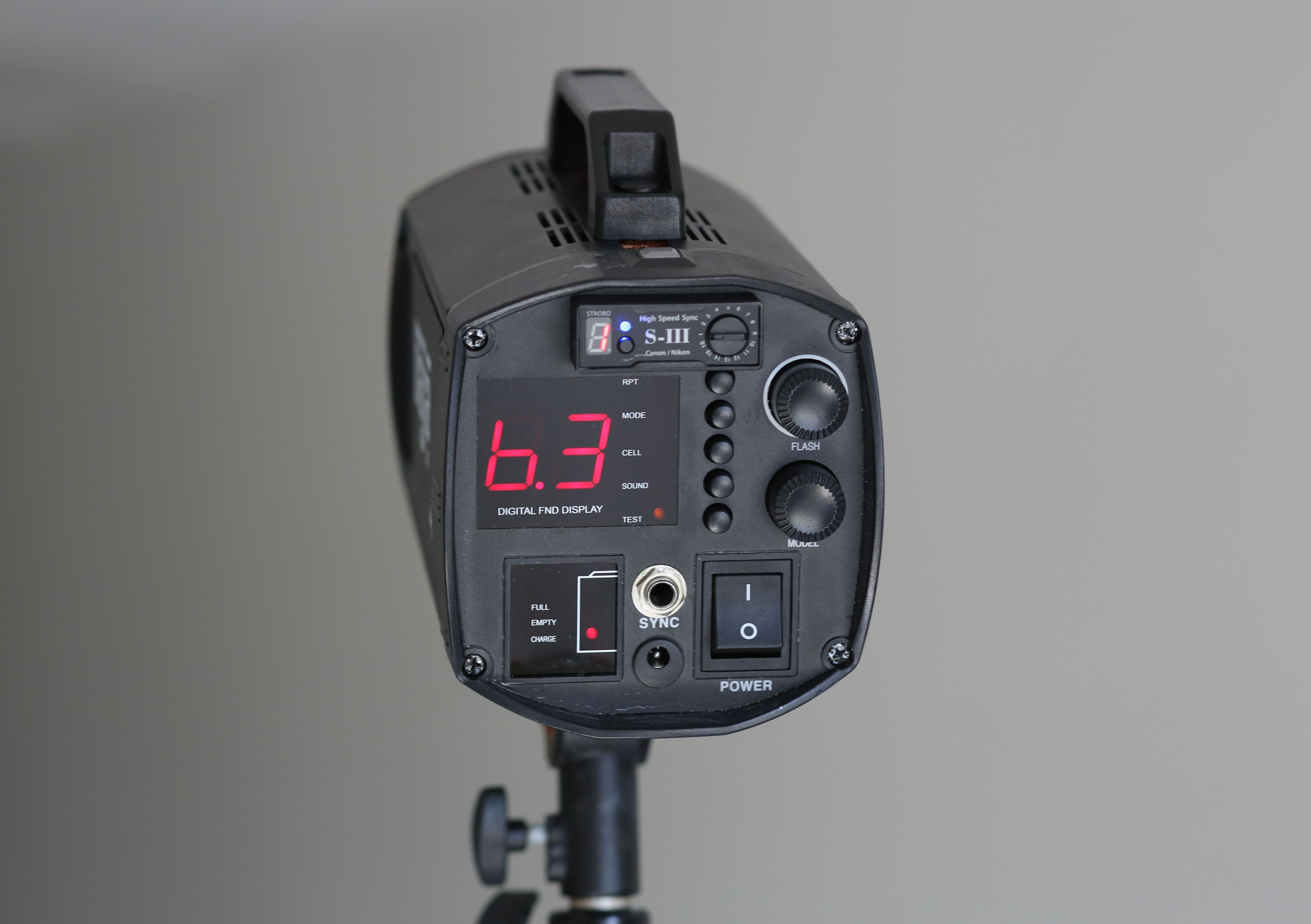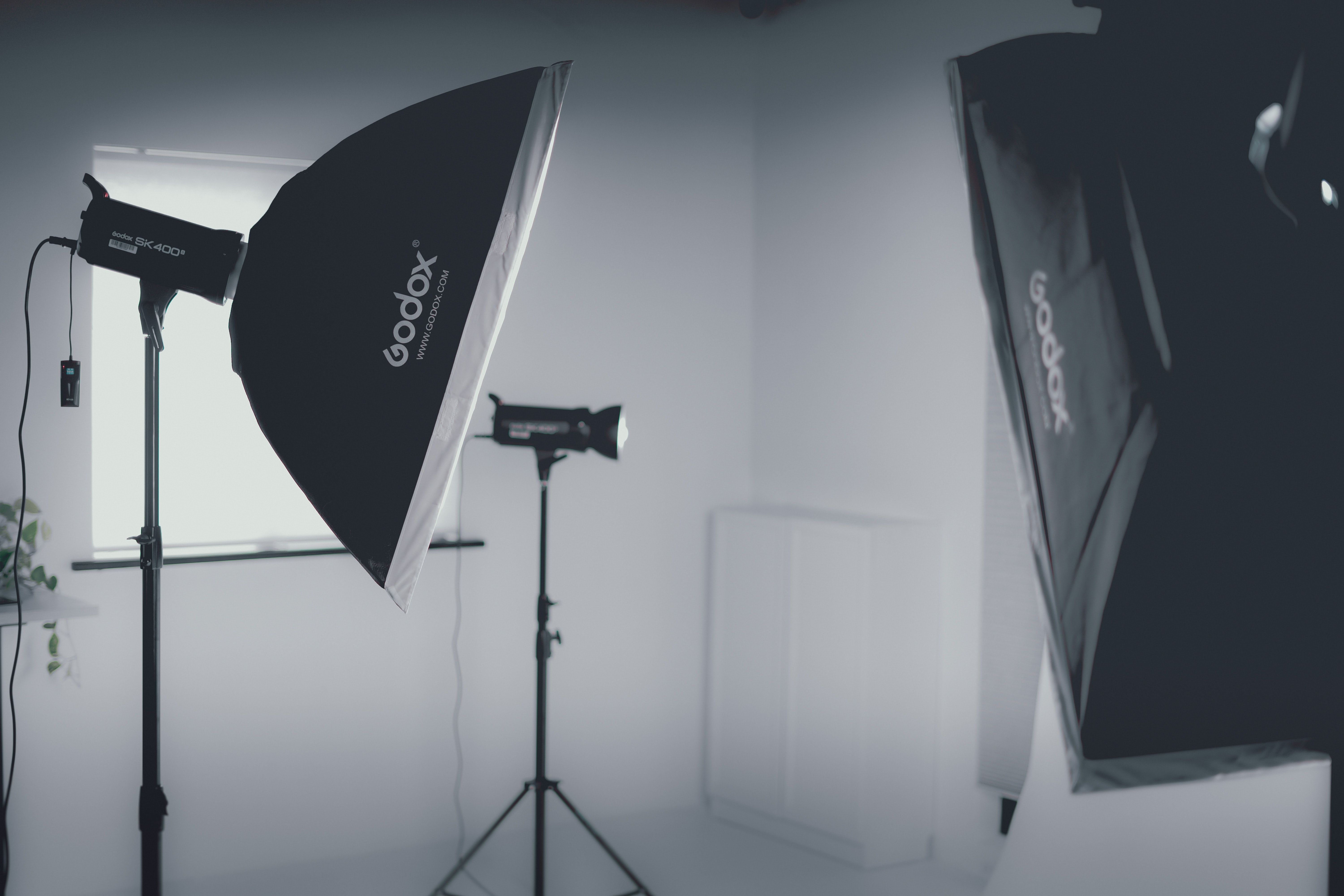How to Use a Strobe Light to Shoot Better Photos
Posted by admin on
Strobes, also known as monolights or studio lights, are the free-standing flashbulbs used by studio photographers to create a professional, commercial look when shooting models or products.
If the studio look is one that you love, investing in one or more strobe lights for your own DIY photography studio might be a wise move. Setting up strobe lights can be confusing at first, but once you've done it once, you can almost certainly do it again.
What Is a Strobe Light in Photography?

Picture an outdoor wedding, one that you've been hired to document, with T-minus 30 to sundown. You're armed with nothing more than a few practical sconces on the outside of the venue, your beautiful bride and groom, and the power of the sun. They're taking their sweet time, however, and you need to capture the iconic kiss if you want to walk away with your paycheck fully intact.
If you've ever been backed into this unfortunate corner, you're already familiar with the bitter sting of defeat. What if we told you that you never have to be without a viable source of light again? Running a line from the venue to a standalone monolight would require no more than an extension cable and an outlet. A battery-run strobe would be even more convenient and versatile.
Related: Low-Key Lighting: What It Is and How to Use It
Strobe lights, like any flash, are energy-saving by principle. Instead of running at their full output capacity continuously, they release a short and incredibly powerful burst of light when either the test trigger is activated or the shutter of the camera is released. The artist is able to synchronize the strobe with the camera's shutter using either a mounted wireless transmitter or with a physical sync cable jacked directly into the light.
These units differ from speedlights, a term that refers to an external flash mounted on the head of the camera itself. You'll recognize these paparazzi-style accessories as the flash-guns that many wedding and event photographers always have on hand for when the party inevitably rolls on into the night. These flashes are fine in a pinch, but the freedom and the flexibility that studio strobes offer far outweigh the set-up and hassle.
How to Use Strobe Lights in Photography

Before diving in, here are a few key photography terms to remember:
- Transmitter and Receiver: Unless you're using a physical sync cable to trip the strobe, you'll need a hot shoe transmitter capable of communicating with your digital strobe light wirelessly; you can see the one that we use pictured above. Like walkie-talkies, you'll need to make sure that both the strobe light and the transmitter are set to the same channel.
- Flash Duration: This describes the duration of the flash when triggered. Consider this to be the "shutter speed" of the strobe.
- Recycle Time: After being discharged, even the most sophisticated strobe will need some time to regain its composure before you can fire it off again. For some strobes, this will take less than a second.
- Guide Number: Guide Numbers, called "GN" for short, are a list of values provided by the manufacturer that relates the output of the flash to different ISO ratings. Together, when factored in with the distance between the strobe and your subject, this list of Guide Numbers will help you find your footing after first setting up.
- Modeling Light: Every modern digital strobe light will be equipped with a modeling light. This light will be very weak compared to the actual strobe when activated. Its purpose is to stand in as a placeholder when moving your lights around. It gives you a rough idea of where the flash will fall as you actually shoot.
There are only a few pieces to this puzzle. Keeping them all straight makes studio lighting easy and fun.
Determining the Correct Camera Settings
When many people try shooting with a strobe for the first time, they struggle to nail down the correct camera settings to match the output of the light. It can be tricky if you're used to working with sources that are always on and visible, but there are many ways to find the appropriate settings to be working with.
Before going any further, it's worth mentioning that high-speed photographers will need to shell out for strobes that are fast enough for their needs. The top sync speed you'll be able to attain when using most types of studio strobe lights will usually be somewhere between 1/200 to 1/250. If you try to go any faster, you'll notice that parts of the frame will be totally dark.
When shooting with a flash, there will be very little difference between using a shutter speed of 1/60 or 1/200 aside from motion blur and how much ambient light the sensor receives. In a studio that is kept completely dark aside from your strobe, however, this difference will be negligible. Many photographers simply use the fastest possible shutter speed that the strobe can handle and leave it at that.
If you're already familiar with the triad of exposure compensation, you may assume that this leaves you to fend for yourself with only your aperture and your ISO by your side. In flash photography, you do have another ace up your sleeve: the intensity of the strobe itself, which can be adjusted around your needs. You may also choose to use a neutral density filter if you would like to open your aperture up without blowing out the image.
Strobe Lighting: Studio Shooting From Square One

So you've got your subject, your camera, and your strobe light set up. Your transmitter and receiver are corresponding on the same channel and the test trigger fires the strobe off as expected. What should happen next?
You can start by choosing your ISO setting; starting at 100 ISO as your baseline is generally a safe bet. After establishing your ISO rating and choosing your strobe intensity, you can find the appropriate Guide Number in the strobe's manual or online.
At this point, you'll need to crunch some numbers. Measure the distance between your subject and the light in feet or meters, whichever your list of Guide Numbers refers to.
Guide Number = Distance from Strobe / Correct Aperture
The Guide Number is equal to the distance between the subject and the flash divided by the correct aperture for the camera. Divide your Guide Number by the distance that you measured. The result will be the aperture to choose from, and you can adjust by eye therein. Math sucks, but it sure does come in handy sometimes, doesn't it?
Once you're taking photos that are well-exposed, the fun can really begin. Shove things around. Shake it all up. Use the strobe as a backlight instead of as your key. Keep trying things out until you're happy with the results. Then, break it all down and try it again from scratch.
Basic Light Diffusion for Strobes

With strobe lighting, light diffusion may entail more than just throwing a bedsheet over the light and calling it a day. With a beam as penetrative as a strobe, the artist needs to find the balance between subtlety and efficacy. We recommend that beginners try to avoid turning the flash straight onto the subject directly, especially if the head of the lamp is totally unadorned.
Again, in lighting, distance is everything. When shooting in close quarters, you can earn a little bit of real estate by turning the head of the lamp away from the subject and bouncing the light out of a reflector, a mirror, or even just off of the wall or ceiling. Corralling this light with floppies or large sheets of cardboard will prevent the light from spilling out elsewhere, muddling the scene. You'll be left with a diffuse yet purposeful-feeling source that you can adjust to your exact preference.
Related: Essential Photography Gear Items Every Camera Newbie Should OwnDiffusing light in this type of setting will depend a lot on who you're shooting and what you've got to work with. Studio color gels and diffusion material are both great options for setting a mood and can be used to enhance the appearance of a model. An appealing and romantic vibe is just as easy to attain with a light, white bedsheet, and some tinfoil, however. It's all about how you play your cards and what you're trying to achieve.
If you've got money to blow and clients already scheduled to shoot, the best diffusion for strobe lighting is, inevitably, the largest softbox that you can find. There are many affordable brands, and all of them are more than capable of helping every shot shine.
The World of Strobe Lighting Is Now Your Proverbial Oyster
We've covered nothing but the essentials, but, chances are you've already got a mini-studio set up and ready for more. There are so many ways to mold strobe lighting to match your vision. Once you're used to how much power they pack, you'll never want to shoot another random candid session again.
